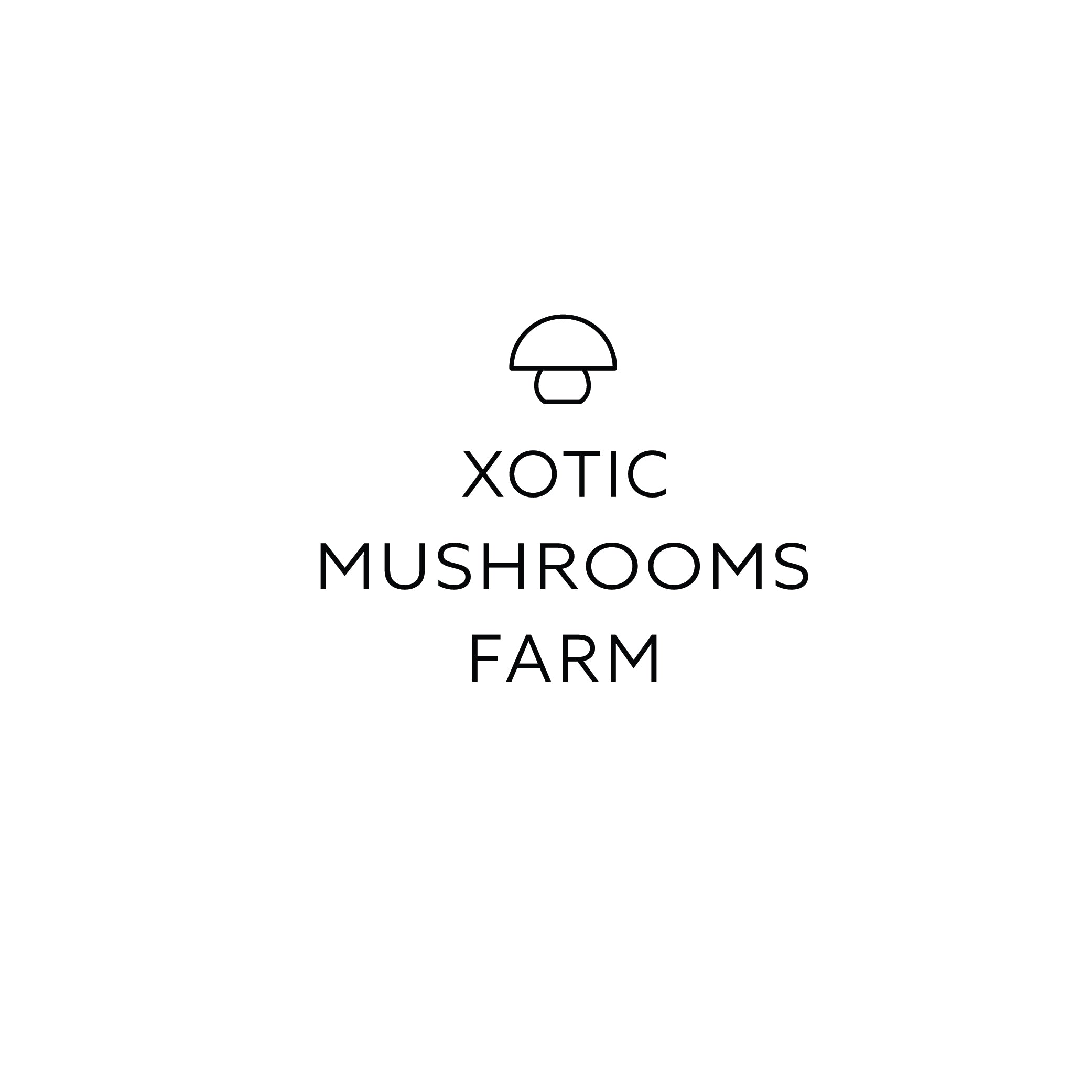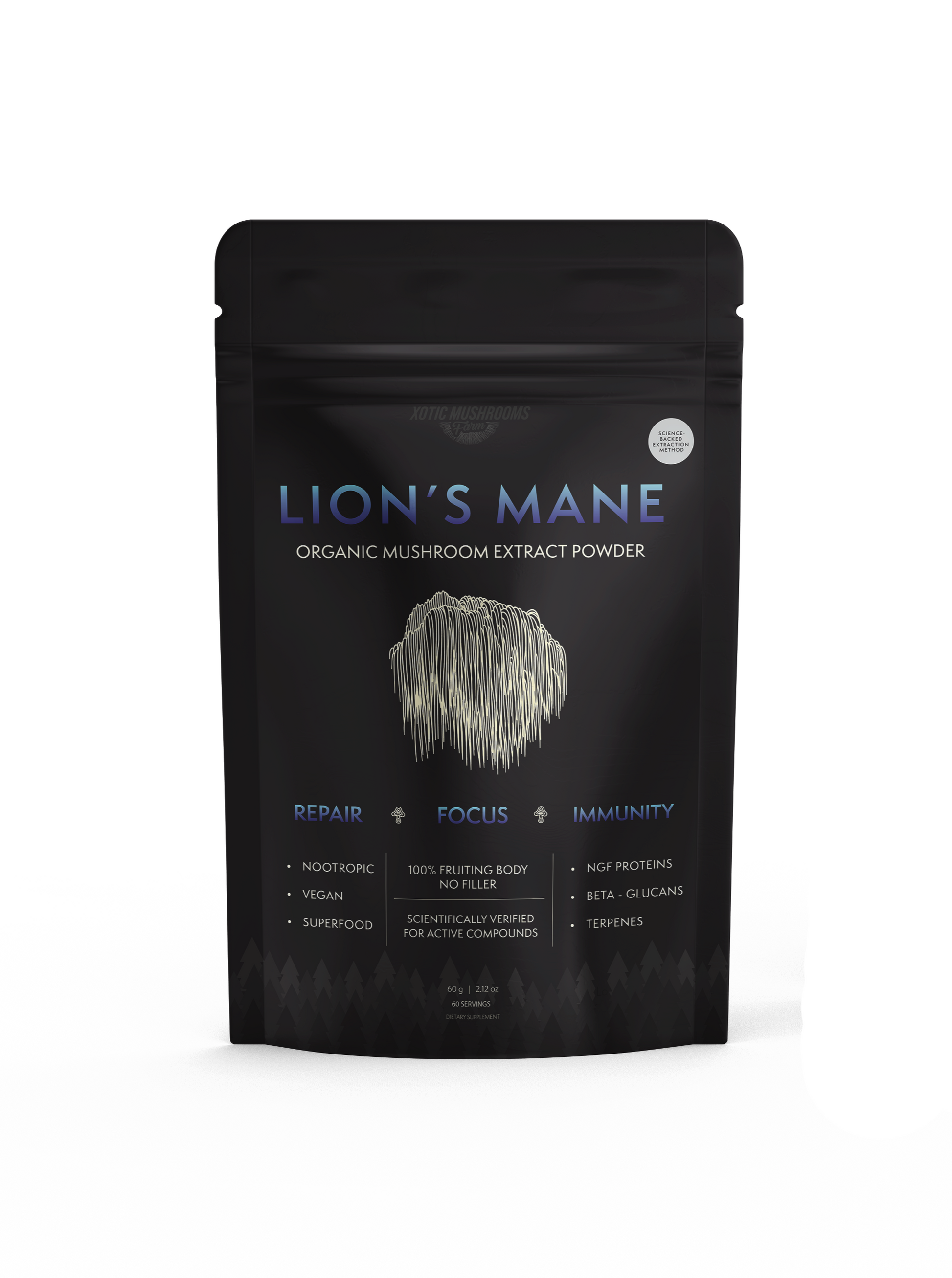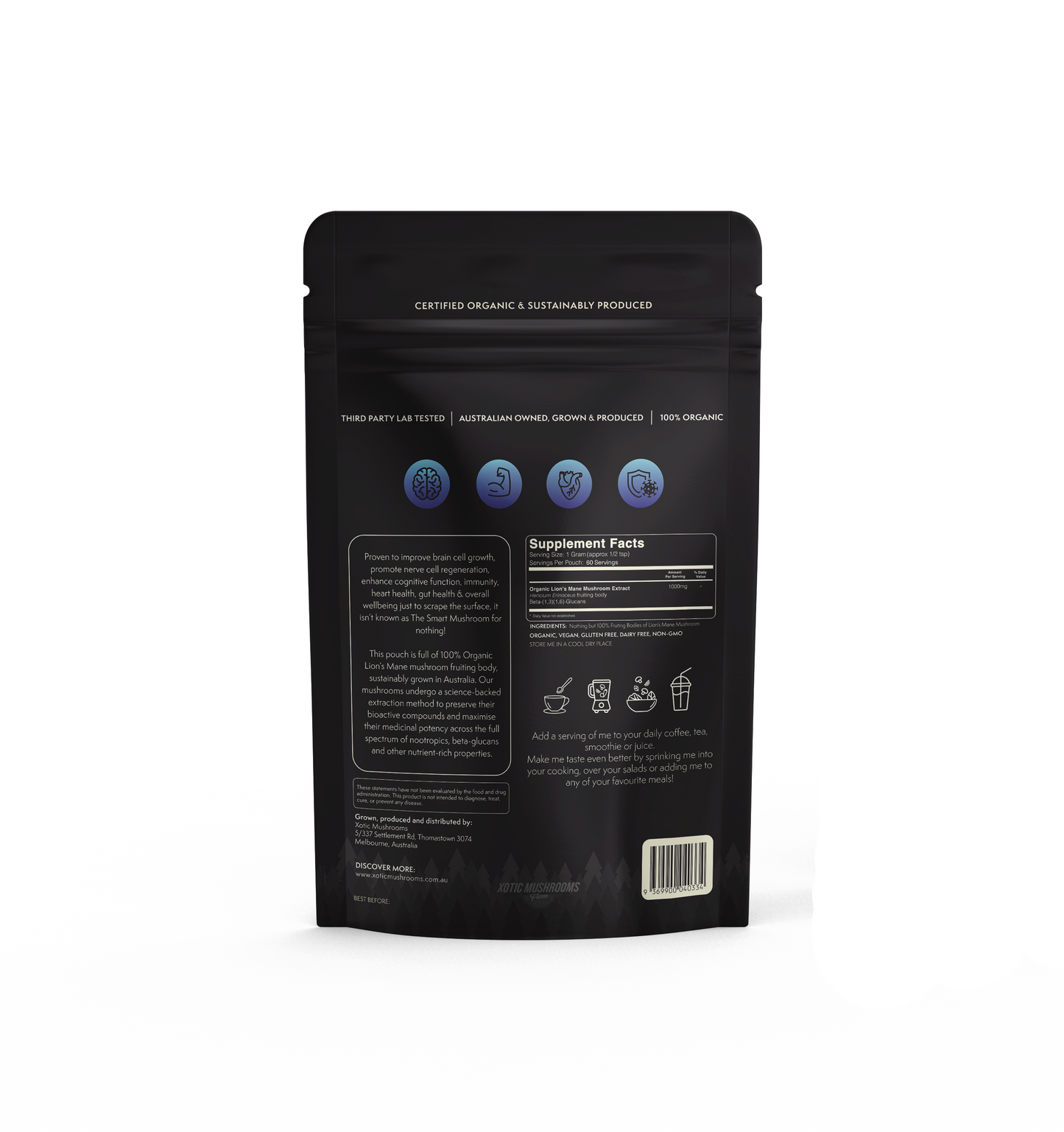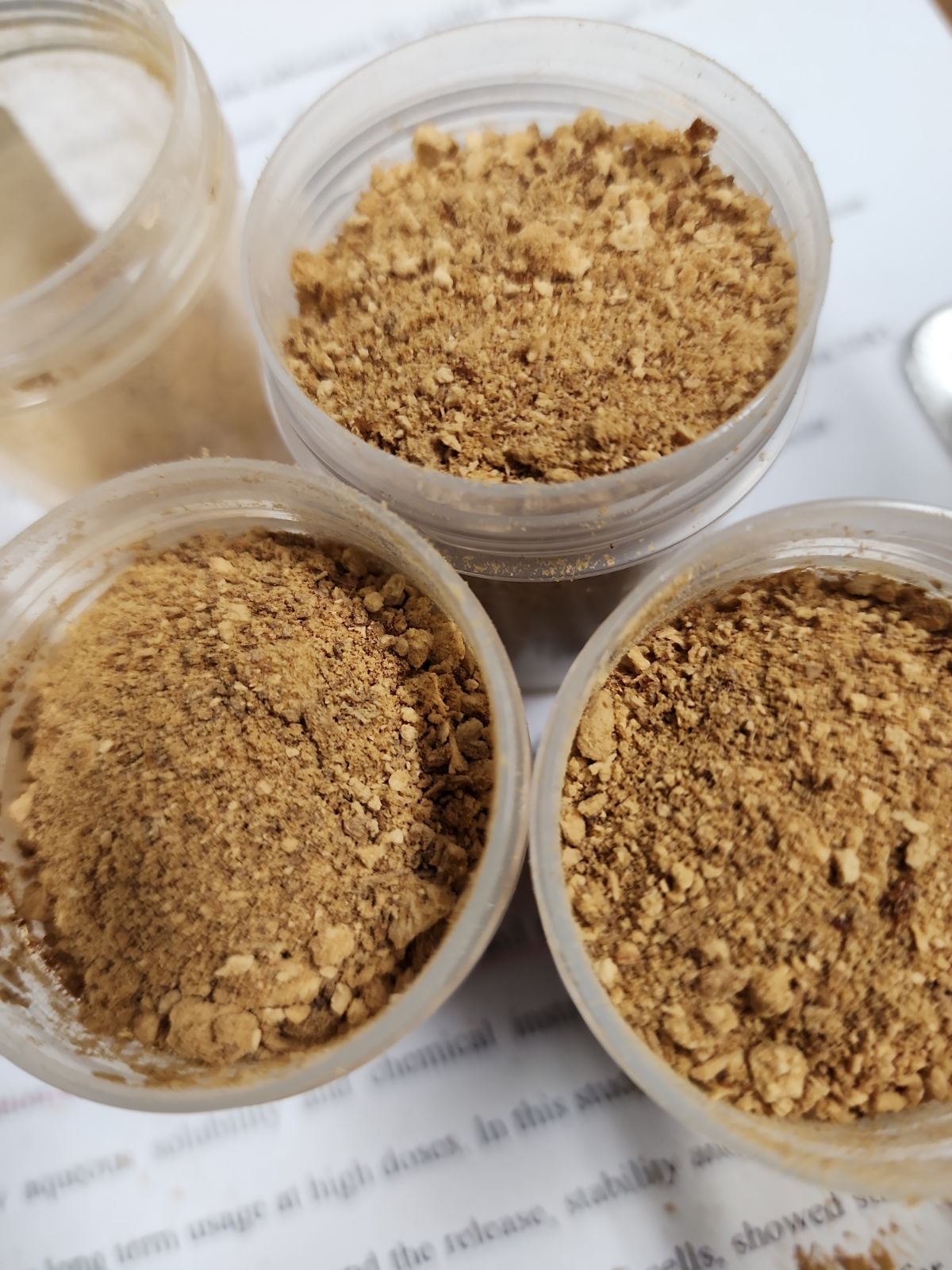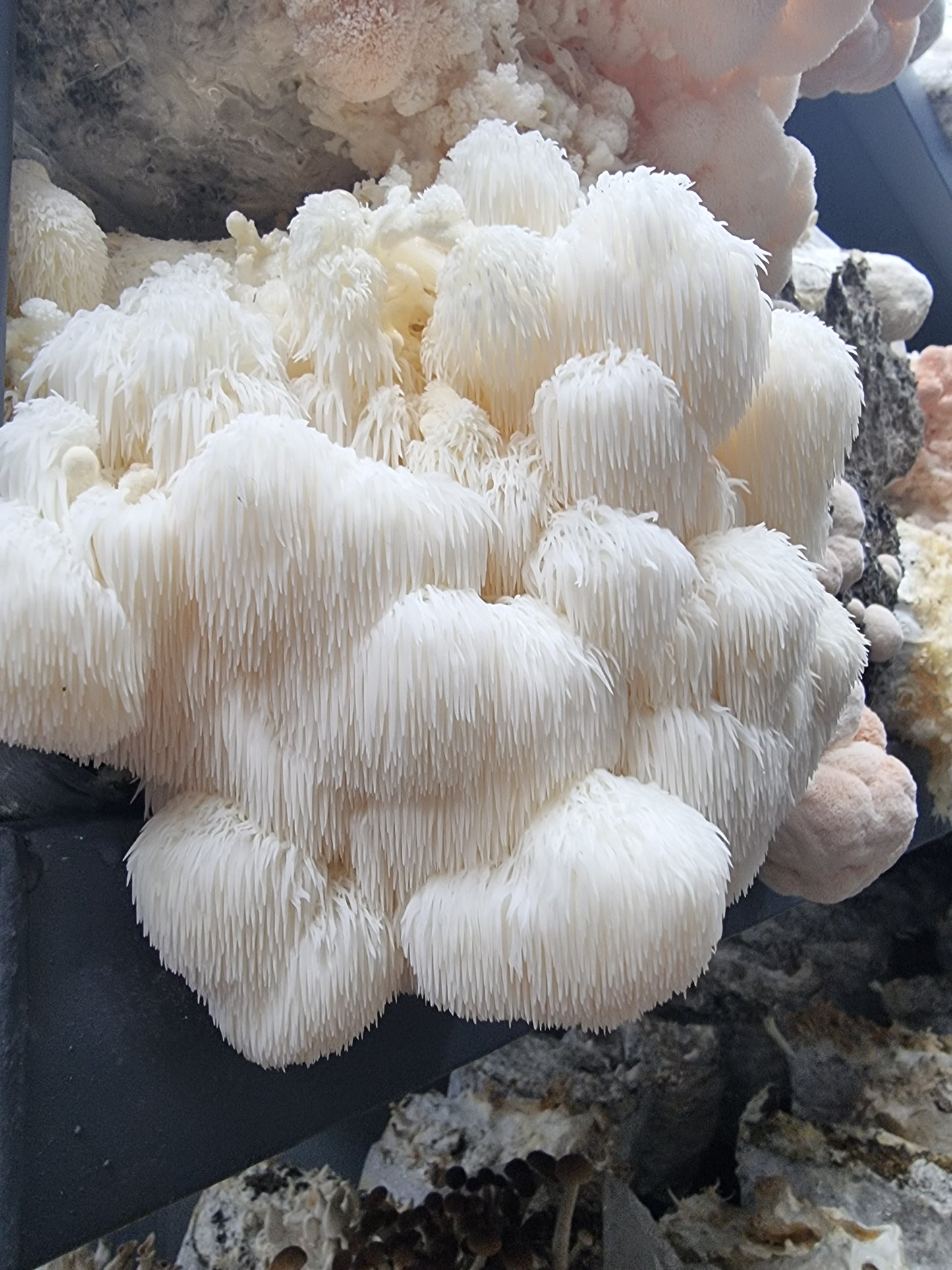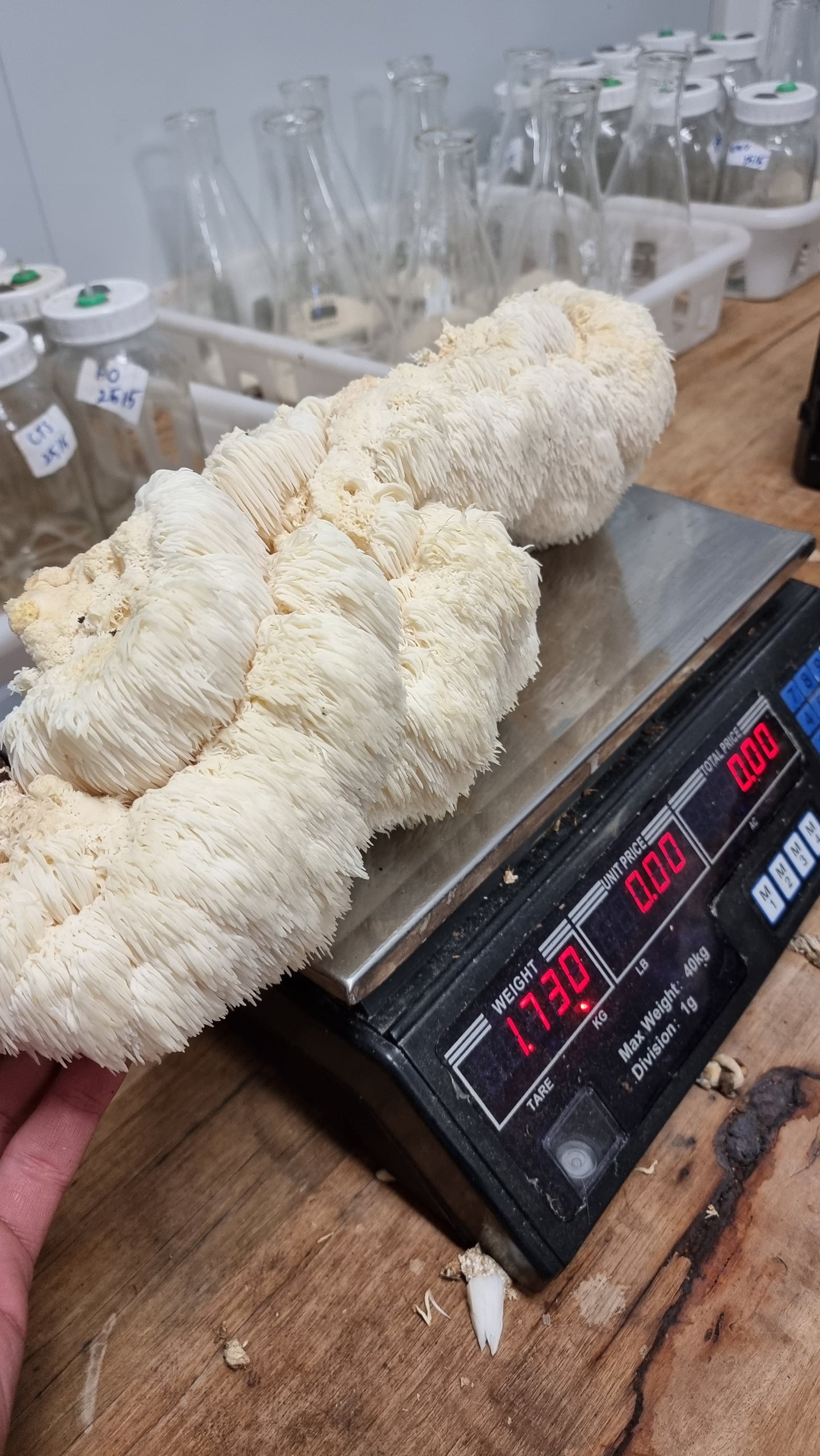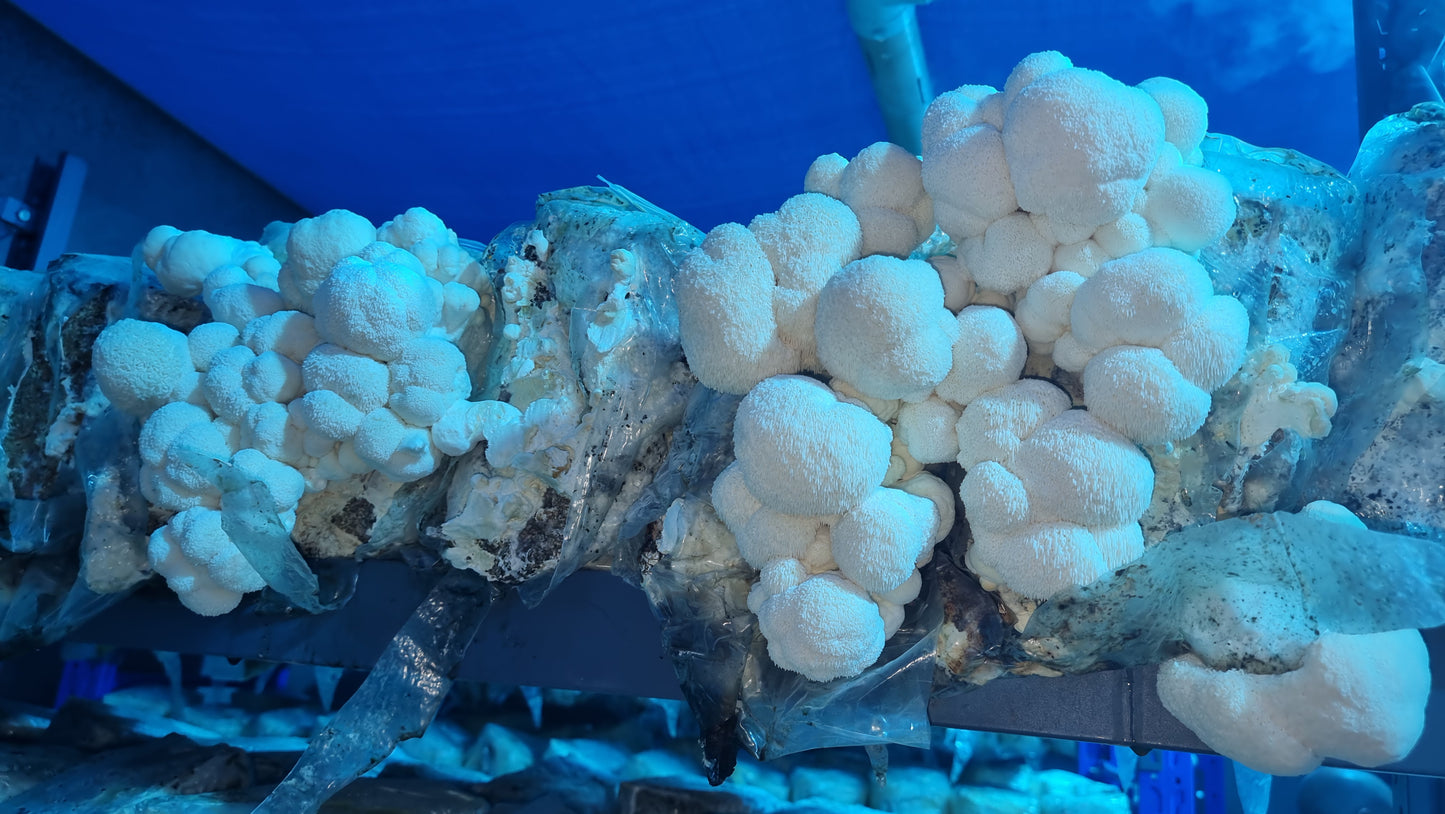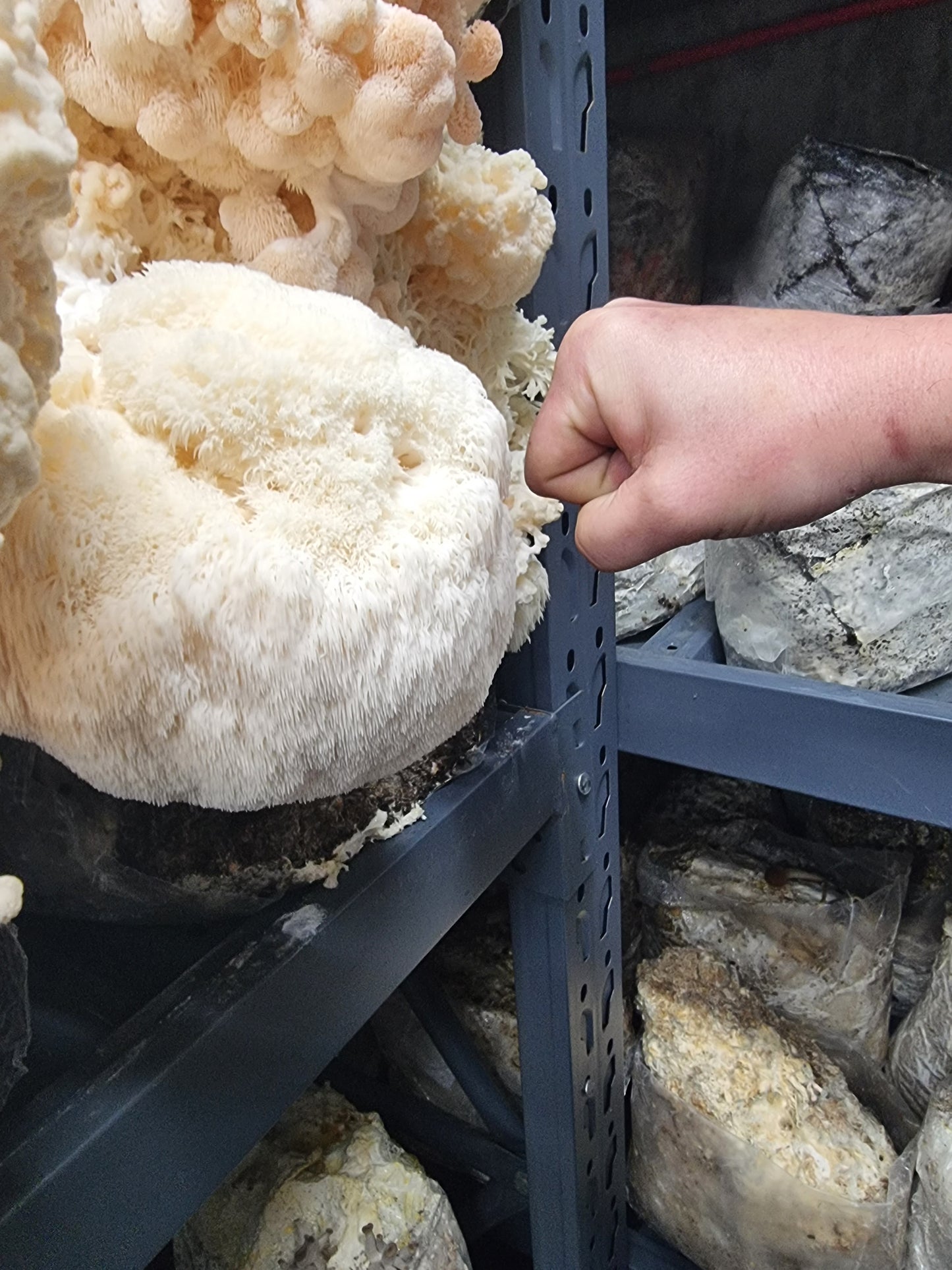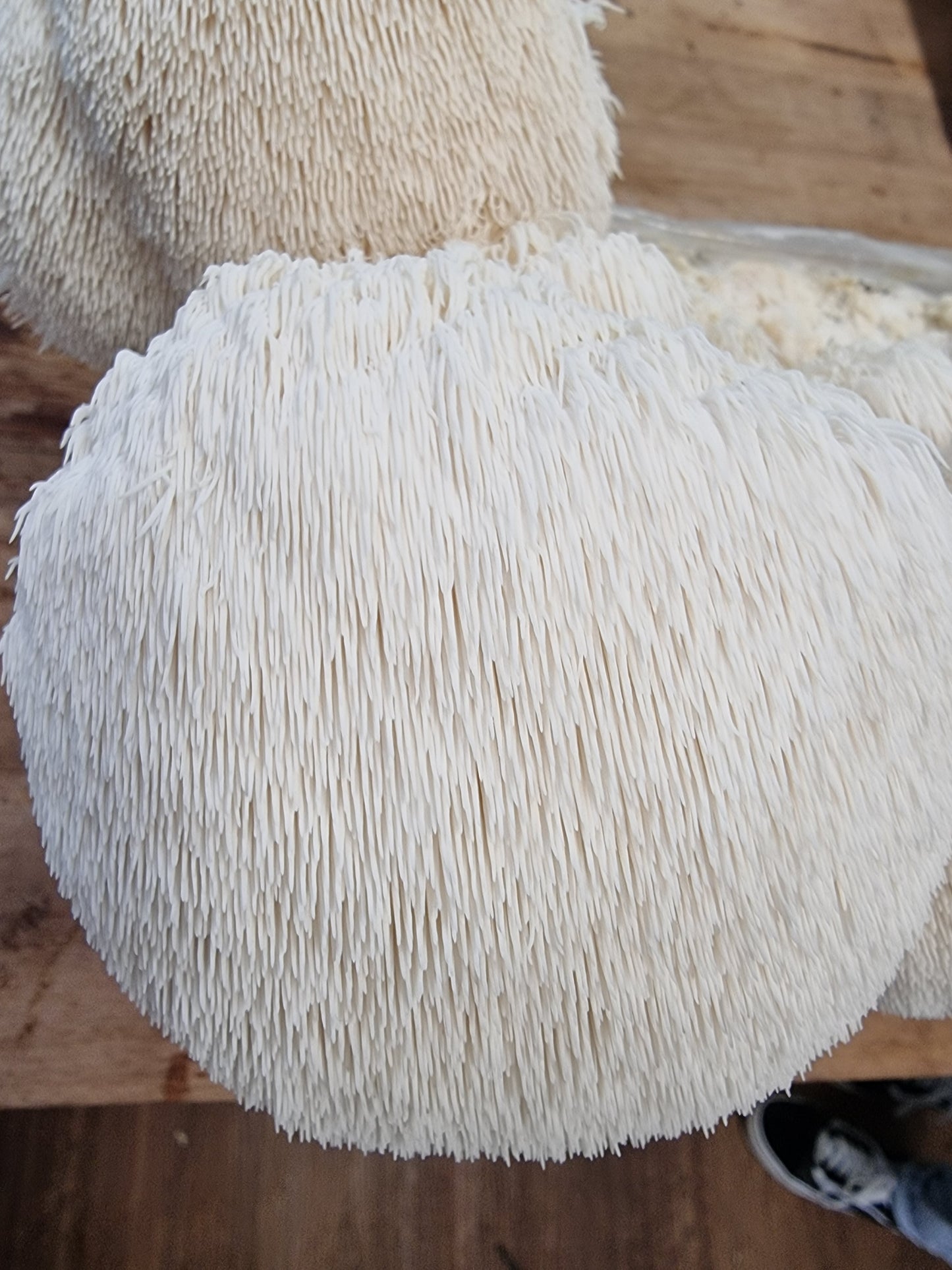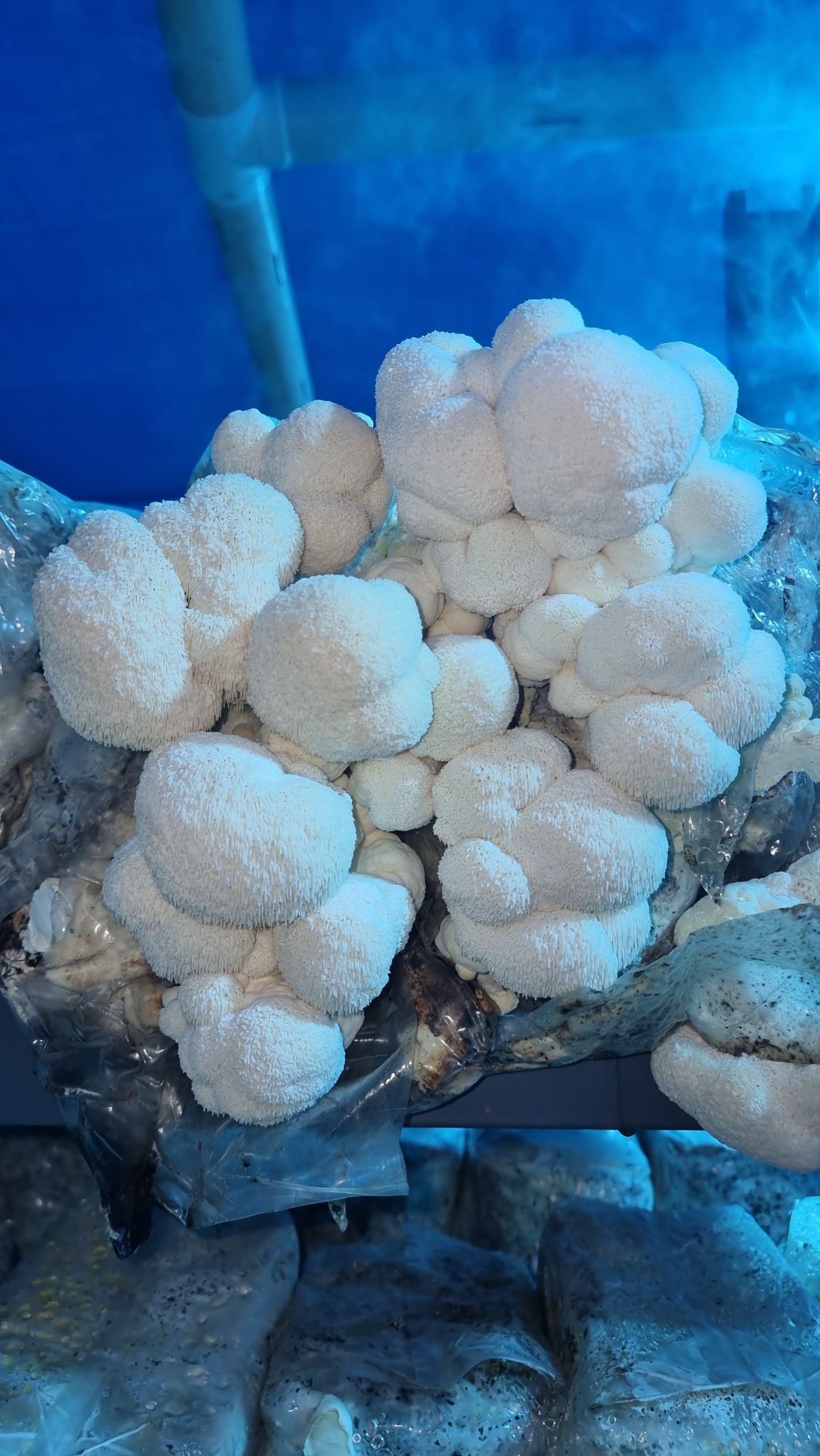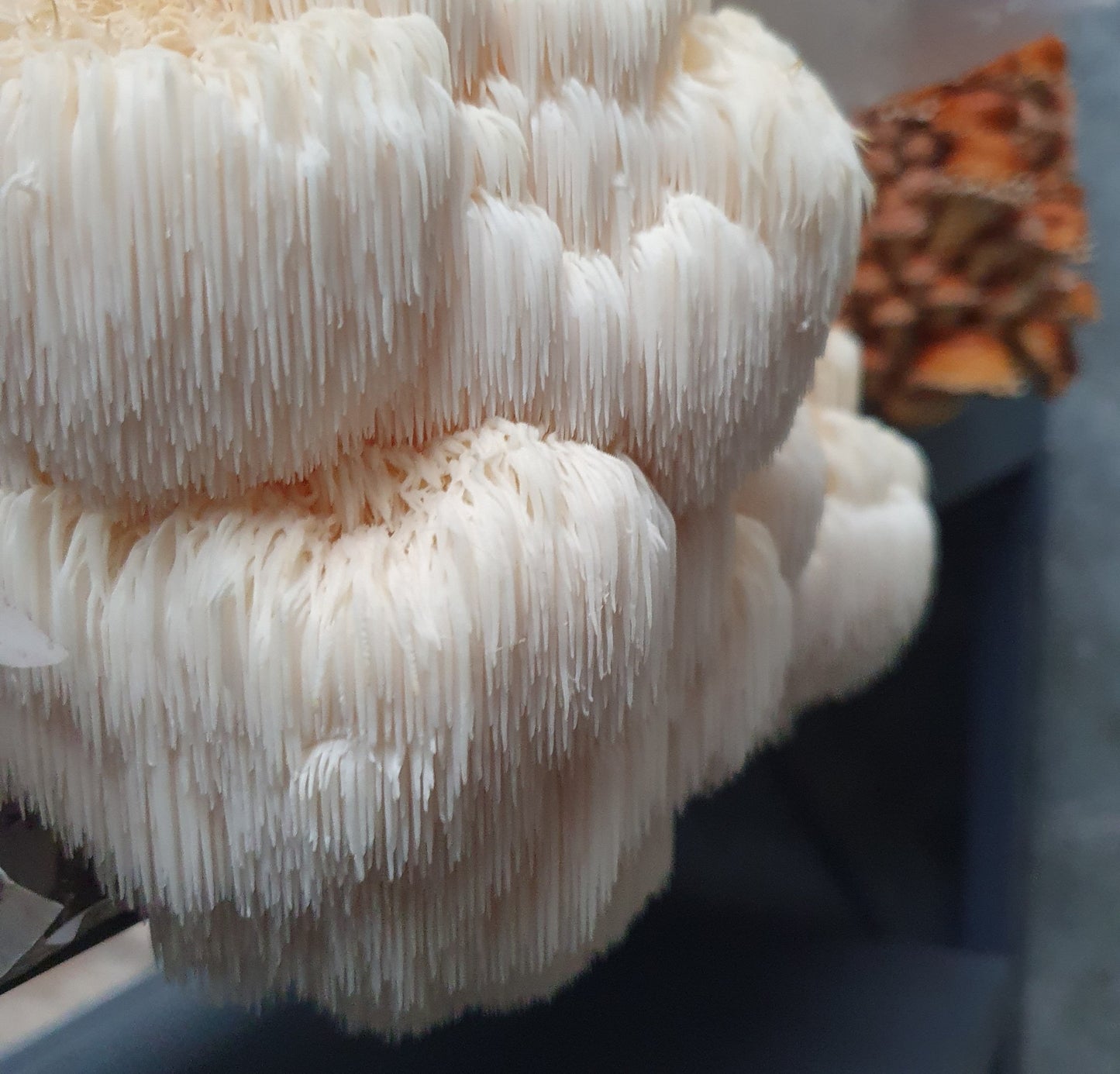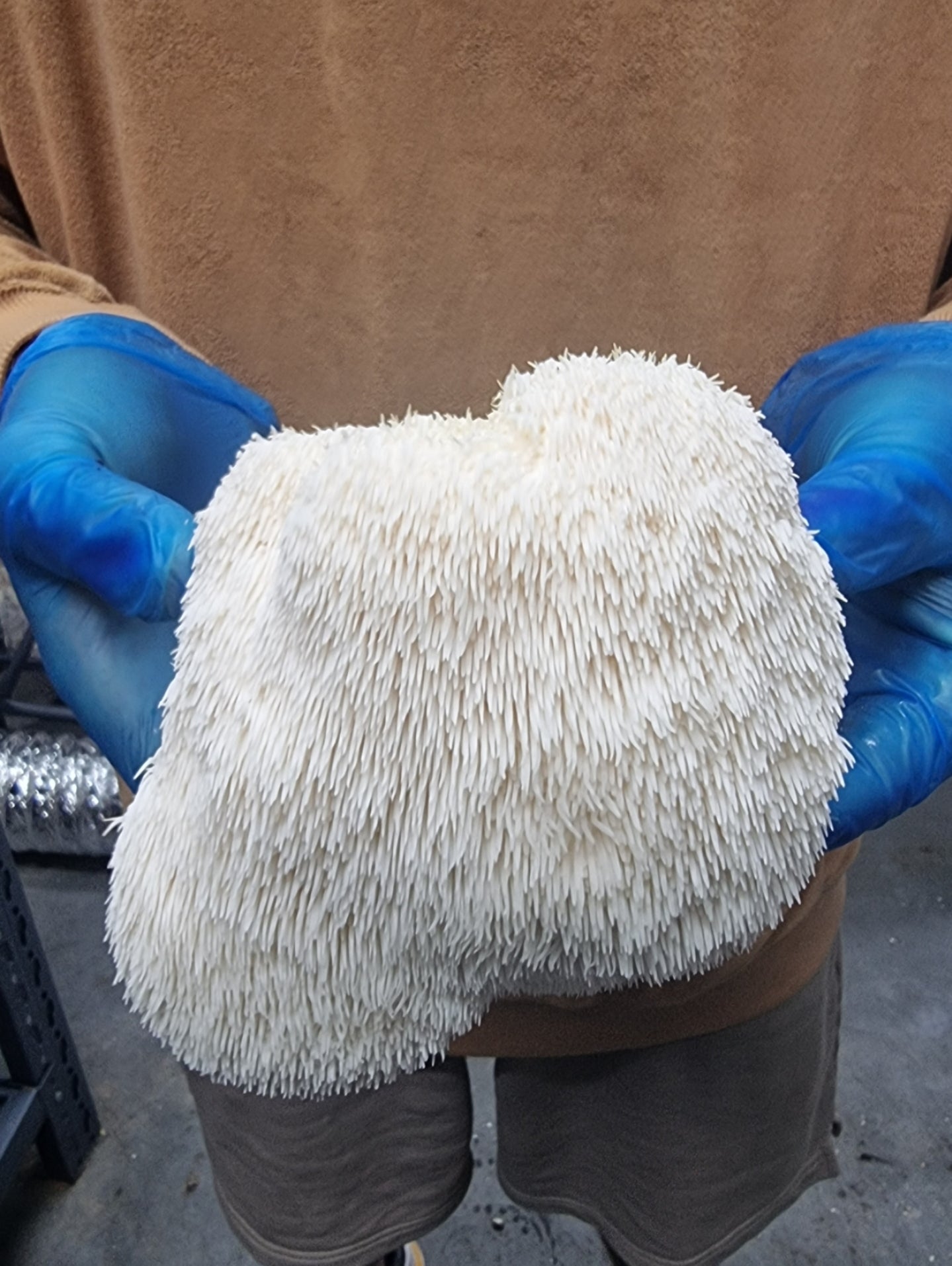Growing mushrooms successfully requires more than a damp environment; a suitable substrate is crucial for optimal growth.
However, many cultivators must pay more attention to the importance of nutrients within the substrate, leading to poor yields and disappointing results.
Understanding the role of essential nutrients in your mushroom substrate can transform your cultivation process, ensuring robust growth and bountiful harvests. This guide will explore the various roles of nutrients in a mushroom substrate.
1. Promotes Mycelium Growth
Nutrients are crucial in promoting mycelium growth, the vegetative part of fungi responsible for colonising substrates. Mycelium requires a steady supply of carbon, nitrogen, phosphorus, and other essential elements to grow and spread effectively.
Carbohydrates, often derived from organic matter in the substrate, are the primary energy source for mycelial growth. Nitrogen helps in protein synthesis, which is essential for mycelial structure.
Adequate calcium, magnesium, and sulfur minerals also support mycelium's ability to build cell walls and resist environmental stresses. Balanced nutrient levels are critical to prevent imbalances that can stunt mycelial expansion or lead to weak, poor-quality fruiting.
2. Supports Enzyme Production

Enzymes are vital for breaking down complex organic matter into simpler compounds that mushrooms can absorb. Nutrient availability directly influences the production of enzymes like cellulases, ligninases, and amylases, which degrade plant materials like cellulose, lignin, and starch.
Nitrogen, phosphorus, and potassium support enzyme synthesis, enabling the mycelium to access these nutrients more efficiently. Enzymes also contribute to nutrient cycling within the substrate, breaking down dead organic matter into usable forms.
The mycelium could access its food source with sufficient enzyme production, limiting growth and fruiting potential.
3. Regulates Cell Division and Growth
Nutrients regulate cell division and expansion in fungal cells, directly impacting the overall growth rate and structure of mycelium and fruiting bodies. Nitrogen is a key component in DNA and protein synthesis, thus influencing cellular division and growth.
Phosphorus supports ATP production and contributes to energy transfer during cell division. Potassium, conversely, regulates the osmoregulatory balance within fungal cells, ensuring that they maintain proper turgidity and function.
Inadequate nutrient supply can result in stunted growth, abnormal morphology, and a failure to form healthy fruiting bodies. Optimal nutrient conditions create a conducive environment for vigorous fungal development.
4. Increases Fruiting Body Formation

The formation of fruiting bodies is heavily influenced by nutrient availability. When mushrooms receive a balanced nutrient profile—particularly in terms of nitrogen, phosphorus, and trace elements—this triggers the mycelium to shift from vegetative growth to reproductive growth, forming fruiting bodies.
Nitrogen is essential for mycelial growth but must be reduced at specific stages to encourage fruiting. A higher level of phosphorus supports the development of the fruiting body and the production of energy necessary for its maturation.
Proper nutrient ratios, combined with environmental factors like humidity and temperature, help stimulate the production of healthy and abundant mushrooms.
5. Strengthens Cell Walls
Nutrients such as calcium, magnesium, and silica strengthen fungal cell walls, providing structural support and protection. These minerals are involved in synthesising chitin and other polysaccharides that form the rigid framework of the cell wall.
Muscular cell walls help maintain the fungus's integrity and improve its resistance to environmental stresses such as physical damage and pathogen attacks.
Moreover, fortified cell walls increase the fungus’s ability to withstand unfavourable conditions like drought or high salinity, leading to healthier, more resilient mushrooms and better overall growth.
6. Improves Fruit Quality

Mushrooms are highly sensitive to their growing conditions, and nutrient availability significantly impacts the quality of the fruiting bodies. Proper levels of nitrogen, potassium, and trace elements like zinc can enhance the mushrooms' appearance, texture, and flavour.
Nitrogen is vital for developing proteins and amino acids, contributing to better taste and texture. Potassium regulates water retention in the cells, leading to firmer and more consistent fruiting bodies.
Additionally, balanced micronutrients promote the development of antioxidants, improving the mushrooms' health benefits and extending their shelf life.
7. Boosts Disease Resistance
The availability of specific nutrients significantly enhances a mushroom’s ability to resist diseases and pests.
Potassium, for example, improves the general health of mycelium by boosting its defence mechanisms, such as producing secondary metabolites that act as natural pesticides.
Trace elements like copper, zinc, and manganese are essential for enzyme systems that help the mushroom defend against fungal pathogens. Additionally, nitrogen helps regulate immune responses and strengthens cell walls, making it harder for pathogens to penetrate.
When nutrient levels are optimised, mushrooms are better equipped to fend off infections, leading to healthier crops with fewer losses.
8. Enhances Nutrient Absorption

Mushrooms rely on efficient nutrient absorption to sustain growth and produce high-quality fruiting bodies. The availability of macro- and micronutrients, including nitrogen, phosphorus, and potassium, helps the mycelium develop an expansive network of hyphae that increases its surface area for nutrient uptake.
Mycelium can also absorb essential minerals from the substrate, such as calcium, magnesium, and iron, which are important for cellular functions and enzyme production.
Adequate nutrient availability ensures the mycelium can obtain and utilise resources efficiently, supporting rapid growth and robust fruiting.
In contrast, nutrient deficiencies or imbalances can hinder nutrient uptake, stall growth and lead to poor yields.
9. Facilitates Photosynthesis (Indirectly)
While mushrooms do not photosynthesise, they indirectly benefit from the process through their relationship with photosynthetic plants in their ecosystem.
Nutrient-rich environments, particularly those with high levels of nitrogen and phosphorus, can enhance plant productivity, providing more organic material for mushrooms to decompose.
Mushrooms rely on organic matter for nutrition, and healthy plants produce more carbon-rich compounds that can fuel mycelial growth.
Additionally, some types of mushrooms, such as ectomycorrhizal fungi, form symbiotic relationships with plants to exchange nutrients, further connecting the fungal growth process to photosynthesis in the surrounding ecosystem.
10. Stimulates Higher Yields

Optimised nutrient levels directly correlate with higher yields of mushrooms. Nutrients like nitrogen, phosphorus, and potassium are essential for cellular growth, enzymatic activity, and the formation of fruiting bodies.
When mushrooms have access to a well-balanced nutrient profile, they can produce larger, healthier fruiting bodies and higher overall yields. In particular, nitrogen supports mycelial growth during colonisation, while phosphorus and potassium help stimulate fruiting body formation.
Balanced nutrients ensure the mycelium can access the necessary resources to produce abundant crops. By maintaining ideal conditions for nutrient uptake, mushroom growers can maximise both the size and quantity of their harvests.
11. Controls pH Levels
Mushrooms thrive in slightly acidic to neutral environments, and nutrient availability can influence the pH of the growing medium. For instance, calcium and magnesium can help buffer the substrate's pH, preventing it from becoming too acidic or alkaline.
Maintaining the optimal pH range is essential for nutrient uptake, as certain elements are more bioavailable within specific pH levels. If the pH becomes too acidic or alkaline, nutrients may become locked in forms that the mushroom cannot absorb, leading to stunted growth and poor fruiting.
Regular monitoring and adjustment of pH through nutrient management help maintain a healthy growing environment for mushrooms.
12. Enhances Water Retention
Mushrooms are highly sensitive to water availability, and proper nutrient management plays a key role in maintaining moisture levels within the substrate. Nutrients such as potassium and calcium help regulate the water balance in fungal cells, improving the structure and integrity of the mycelium.
High potassium levels enhance water retention by increasing the osmotic pressure inside cells, allowing them to hold onto water more effectively. This leads to more consistent growth and fruiting, even in environments with variable humidity.
Additionally, organic matter in the substrate, enriched with essential nutrients, can act as a sponge, maintaining moisture levels and supporting robust mushroom production.
Essential Nutrients for Mushroom Growth

The right balance of essential nutrients is crucial for thriving mushroom crops. From nitrogen, which supports mycelial growth, to phosphorus, which drives fruiting body development, each nutrient plays a vital role in maximising yield and quality in mushroom cultivation.
- Nitrogen (N): It's crucial for mushroom growth and supports protein synthesis, enzyme activity, and cell structure. It promotes mycelial growth during substrate colonisation, but too much nitrogen can hinder fruiting body formation. Balanced nitrogen levels lead to robust mushrooms with high yields.
- Potassium (K): It helps maintain osmotic balance and water retention in mushroom cells, supporting cell integrity and enzyme activity. It contributes to protein and starch formation, enhancing fruiting bodies' size, structure, and quality.
- Calcium (Ca): strengthens fungal cell walls, providing structure and protection. It stabilises membranes, supports enzyme function, and produces chitin, making it crucial for healthy fruiting bodies and disease resistance.
- Magnesium (Mg): It supports enzyme activation, energy production, and protein synthesis in mushrooms. It is central to ATP production and strengthens cell walls, improving growth and fruiting potential for higher-quality mushrooms.
- Iron (Fe): is essential for enzyme activity, especially in cellular respiration. It helps form cytochromes for energy production, boosting mycelial growth, fruiting, and metabolic efficiency, ensuring healthy mushrooms with higher yields.
- Zinc (Zn): supports enzyme functions, protein synthesis, and the breakdown of organic materials. It is involved in gene expression and growth regulation, and balanced zinc levels promote efficient nutrient absorption and firm, healthy mushrooms.
- Manganese (Mn): is critical for enzyme activation, metabolic processes like carbohydrate breakdown and amino acid synthesis, and maintaining cell wall integrity. It also supports the fungus’s defence mechanisms against diseases and enhances nutrient uptake.
Conclusion
The right balance of nutrients like nitrogen, phosphorus, and potassium is key to growing healthy, high-quality mushrooms. Optimising your nutrient profile boosts yields, improves fruiting bodies, and strengthens crops.
Elevate your cultivation game, whether you're a beginner or a seasoned grower. Visit Xotic Mushrooms for premium varieties and refine your growing strategy today!
